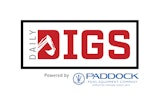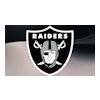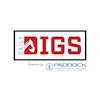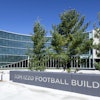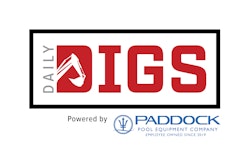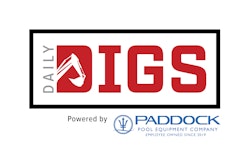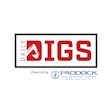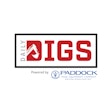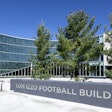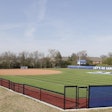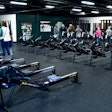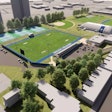Editors' note: In March 2014, students at the University of Wisconsin-Madison approved a $223 million referendum to overhaul the campus recreation facilities, badly in need of improvement. Since then, the recreation program has been busy planning, fundraising, vetting architects and much more. As the project progresses, Alex Peirce, UW-Madison Rec Sports Assistant Director of Marketing and Communications, will be offering an inside look at the process of coordinating such a monumental planning effort.
One of the most exciting aspects of campaigning for and designing new facilities is the amount of people impacted by bigger spaces, new programs, and more opportunities. This is also one of the most challenging aspects. When you have a wide variety of stakeholders, each group has vested interests, specific concerns, and a unique vision for the final project. Here are a few suggestions on how you can identify and engage different audiences throughout the preliminary stages of your project, whether that’s in your campaign or design phase.
If you’re in the beginning stages of your project, I would highly recommend making a list of everyone who will feel the impact of your new facility. Consider engaging participants, non-participants, community organizations, residents who live near your project site, media outlets, fundraisers and donors, proud supporters, and – dare I say it – outspoken naysayers. Yes, they have an important role to play in your project, too. But we can discuss how to handle the haters in a future post. Spoiler alert: don’t ignore them completely. When you’re just starting out, it is helpful to have a grasp on all the people you’ll want to meet with and engage throughout the project so that you don’t leave anyone out when you’re nose-deep in planning. Use them as allies, sounding boards, focus groups, or resources for amplifying your message.
Whether you’re designing a campus recreational facility, a corporate health club or an athletic complex, you will likely run into another group with a different agenda. Not every group’s agenda will be legitimate or relevant to your cause, and how you handle those voices will obviously be left to your discretion. We found that intentional conversations and collaborations led to more informed, if not more supportive, stakeholders. This isn’t to say that all of our conversations were constant, easy or quick. Nor is it to say that we were routinely involved in heated debates about the future of our facilities. We took our time – and continue to take our time – in developing relationships that are critical to our mission and position on campus, and we sought as many resources as we could to be successful in passing the referendum.
We identified many important groups for our project, but several key stakeholders stood out to us due to funding, communication, shared usage or construction logistics:
- Rec Sports members and participants
- Student government
- Student organizations
- University Athletics
- UW Alumni
- Local swim community
- Neighborhood residents close to campus
We divided our list among our staff based on pre-existing relationships, shared interests, and levels of influence. Our conversations occurred in a variety of settings, from formal presentations and meetings to more casual happy hours and coffee dates, depending on the relationship. Each group played a significant role in our campaign, even though many of them had very distinct opinions and agendas.
Depending on your project, your list may look a lot different from ours. Once you’ve identified your key stakeholders, though, develop a plan for reaching out. Some connections will be natural -- or at least necessary -- while others may be brand new. You’ll want to keep these groups informed, educated and engaged throughout your project. Not only does this give your organization more exposure and validity, but it can help you anticipate potentially negative press. Including your audience also helps them feel part of the process and gives them a sense of ownership over the finished product. Depending on your budget, the opportunities for building connections with your audience are endless. For tips on marketing on a budget, refer to my last post, Generating Rec Support Through Low-Cost Marketing.
Now that you have established connections, and hopefully achieved permission or support to continue your project, the trick is maintaining and evolving your relationships. We are currently serving a campus where only 50% of the students who were here during our referendum are still here. Two classes of students have graduated since 2014. This creates a new plan of engagement for our division, as we begin the design phase for one of our outdoor fields and our flagship facility, the Southeast Recreational Facility. We are now focusing on re-educating students about the project and obtaining their input on design and amenities. The last thing we want is for a facility to drop in two years and students to question how or why that happened. I will continue to write about how we navigate this process, and continue to engage all of our key stakeholders, during the next stages of our project.
Even if your project does not involve a campaign for funding approval as ours did, I hope you find some relevant parallels to your situation. When you design a new facility, it is easy to get caught up in the process and become distracted by new amenities and shiny features. Does spending the time to engage your stakeholders take more time and energy? Yes. Does it add emotional stress to the project? You bet. Is there a return on this investment? Definitely.
At the end of the day, our mission is to enhance the UW-Madison experience through our programs, services and facilities. We hope to inspire people to play hard, get fit,and live well by taking ownership of their own healthy habits. If we are successful in engaging people in the planning process, in communicating our plans, and in giving them a platform to share their ideas, we think we stand a chance at getting them in the door when the facility opens.









